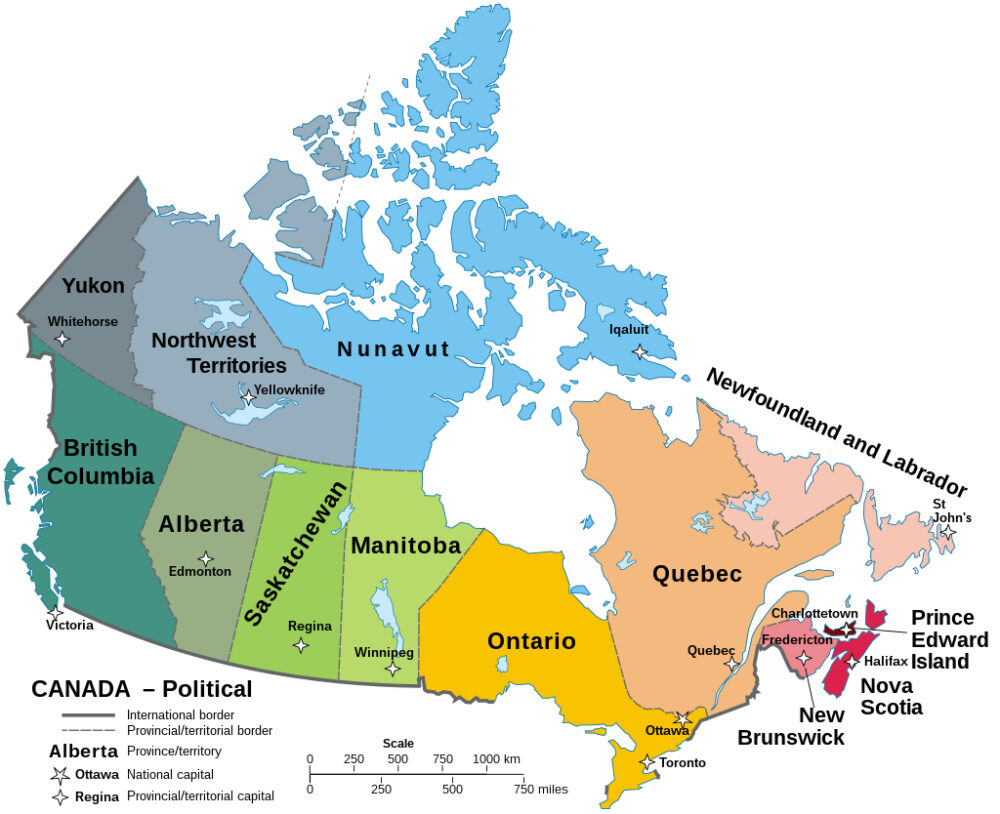
Canada, the beautiful, prosperous, magical, safe, and peaceful “land of maple leaves,” is one of the most diverse and multicultural immigrant countries in the world today. Canada is known for its stunning natural landscapes and vast territory, as well as its focus on education, the environment, and universal healthcare.
Country name: Canada.
Location: Canada is located in the northern part of North America (except for the Alaska Peninsula and Greenland, the entire northern region is Canadian territory). It borders the Atlantic Ocean to the east, the Pacific Ocean to the west, the contiguous United States to the south, and the Arctic Ocean to the north. With a coastline of over 240,000 kilometers, Canada is one of the countries with the most lakes in the world.
Land area: Canada is the second-largest country in the world, with a land area of nearly 9.98 million square kilometers. Canada has 10 provinces and 3 territories, each with its unique geography, history, population, and economy, making it a diverse and multicultural country.
Population: 38.13 million (2021). Of these, people of British descent make up 42%, people of French descent account for about 26.7%, and other European descendants account for 13%. Indigenous peoples (including First Nations, Métis, and Inuit) make up about 3%, while the rest are of Asian, Latin American, African, and other ethnicities. The South Asian population, including immigrants from India, Pakistan, and Sri Lanka, has reached 1.3 million, surpassing the Chinese as Canada’s largest visible minority group. 25% of the Chinese population born in Canada, while the majority come from mainland China, Hong Kong, and Taiwan. 47.3% of the population are Roman Catholic, while 41.2% are Protestant.
National Day: July 1st (1867)

National Flag: The Canadian flag is a horizontal rectangle with a length-to-width ratio of 2:1. In the middle of the flag is a white square with an 11-pointed red maple leaf. On either side are two equal red vertical rectangles. The white square represents Canada’s vast territory, which is covered in snow for over 100 days each year, hence the use of white. The two red vertical rectangles represent the Pacific and Atlantic Oceans.

National Emblem: The national emblem was established in 1921 and features a shield with a branch of three maple leaves at the bottom. The top four groups of images represent Canada’s historical connections with England, Scotland, Ireland, and France, respectively.
National Tree: The maple tree is Canada’s national tree.
Capital: Ottawa
Languages: English and French are both official languages.
Currency: Canadian Dollar (CAD)
